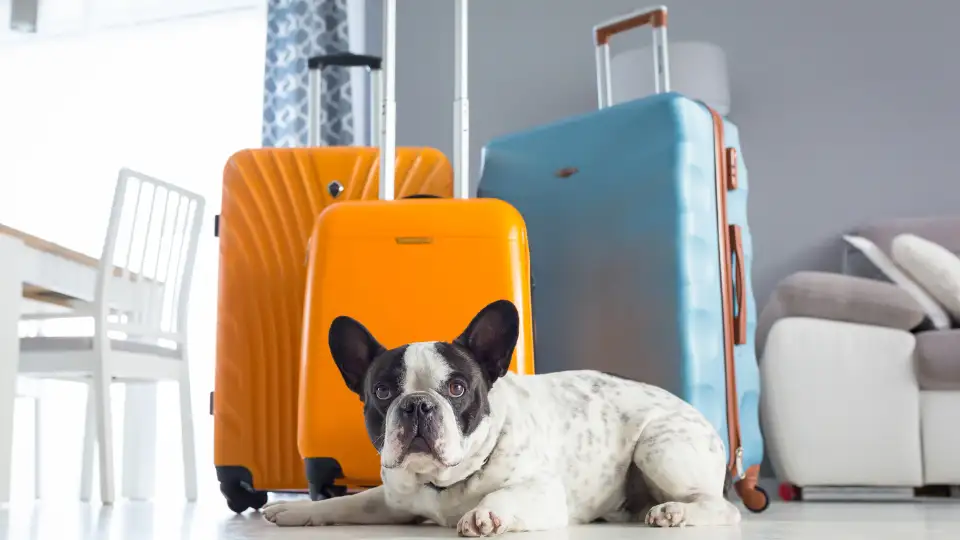If it seems like everyone is flying somewhere this year, it’s because they are. Bookings are almost back to pre-pandemic levels across the country. No matter the reason for the trip or the destination, almost every air traveler today has horror stories about delays, cancellations, missed connections, and baggage issues.
Here’s why it’s likely to continue and some tips to keep your travel as stress-free as possible:
PROBLEM 1: Delays, delays, and more delays. Waits are longer and more frequent than before the pandemic.
During the pandemic, airlines and airport ground companies cut back their workforces, leading to an industry-wide shortage in ground handling staff. As travel has picked up, they’ve been trying to hire more personnel, but it’s a slow process. The Transportation Safety Administration (TSA) and Homeland Security require every airport worker to be background checked, fingerprinted, and drug tested. Staff shortages at the TSA and related agencies mean this process can take 6 to 10 weeks before a potential employee can start working.
In the meantime, airlines and ground handlers are trying to make do with the teams they have. Sometimes this means one team of six to eight people may be responsible for fueling, baggage, lavatory, cleaning, security sweeps, and maintenance checks for several flights. The delays begin when teams can’t get all aircraft serviced in due time before departure.
“Staffing issues probably aren’t going to improve any time this year,” said the Vice President of a ground handling company at Miami International Airport. “Every time any company gets a new batch of employees from the TSA to fill shortages, airlines add more flights, so they have to keep hiring to meet demand, but no one can pay employees if the work isn’t there. Everyone is doing all they can. We’re hoping to be at capacity by holiday travel, but it’s very difficult to predict.”
What You Can Do to Avoid Delays
Try to get the first flight of the day out of your destination. These aircraft are typically parked overnight, which gives ground teams plenty of time to prepare the plane ahead of time. If possible, try to take direct flights to avoid delays in connecting airports.
PROBLEM 2: Cancellations due to a lack of available flight crew.
Similar to ground handling, there is a shortage of pilots and flight attendants across the country. Hiring new personnel means extended training as pilots must be “type rated” to fly a type of aircraft, which means they must pass qualifying tests for each plane they fly. Just because a pilot is type rated to fly a Boeing 737 doesn’t mean they’re automatically type-rated to fly a Boeing 777, an Airbus 320 or any other aircraft. The training of the flight attendants is specific to the aircraft as well.
The other flight crew issue causing cancellations is a policy called Duty Time. All flight crew are limited to the number of hours they can fly in a day. Much like how truck drivers are supposed to stop and rest, flight crews have mandatory rest time. If they’ve been delayed in a city, they can be out of hours by the time they reach a destination. No flight crew = no flight.
What You Can Do to Reduce the Chance of Cancellations
While there are still situations where a mechanical issue or weather grounds a plane, cancellations because of crew time are best avoided by flying early in the day, out of a major airport, and with an airline that has lots of staff available.
A good rule of thumb is that the more flights an airline has going in and out of major airports, the more crew is available to take over should another flight crew run out of duty time. Discount carriers and smaller airports often do not have multiple flight crews they can reposition quickly.
PROBLEM 3: Missed connections and baggage handling issues.
When delays pile up, the chance you’ll miss your connection increases. Unfortunately, due to the issue in PROBLEM 1, not enough ground crew, delays will continue until airlines and ground handling companies are able to staff up.
Similarly, with ground handling crews stretched thin, there simply aren’t enough people to leave in the middle of preparing a plane for takeoff to go fetch bags from delayed connecting flights. As a result, baggage (hopefully) gets put on the next flight heading to the destination on your luggage tag, but this can be a problem if a flight is already filled with passenger luggage.
Though it varies slightly from one airline to another, the Federal Aviation Administration (FAA) and TSA’s general rule is that passengers and luggage must fly together in order to avoid the safety risk of someone checking hazardous materials or explosives in luggage and then not boarding the flight. In other words, your baggage takes a lower priority to luggage for passengers on the next flight.
What You Can Do to Avoid Missed Connections and Baggage Issues
First and foremost, fly direct when the flight has availability and is going to your destination. The vast majority of bags make it on their first flight. If you must make a connection, leave yourself a 90+ minute layover. The idea of only having 50 minutes between flights sounds good at first, but when you’re sitting in the boarding area 45 minutes after your original departure time and then running through the next airport, a two-hour or longer layover actually feels like a relief.
Remember, too-short layovers also impact your baggage getting on your next flight. If you arrive five minutes before your next flight leaves, your bags won’t have enough time to get to your next plane before it takes off. Beyond that, think about what you can do to travel baggage free.
Yes, stocking your carry-on is one tried-and-true tactic, but also think about shipping your luggage instead of taking it with you. Online services like ShipGo, Lugless, and MyBaggage will pick up your bag, hold it, and deliver it to your desired destination and provide a tracking number. You can also coordinate this yourself with UPS or FedEx. Speak to the hotel or destination ahead of time to be sure they’ll accept your package and hold it for you. Either way, when you arrive, your luggage is already there.









